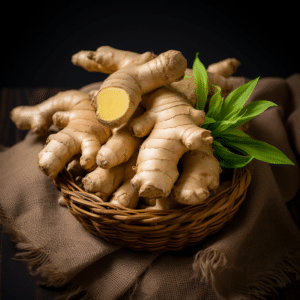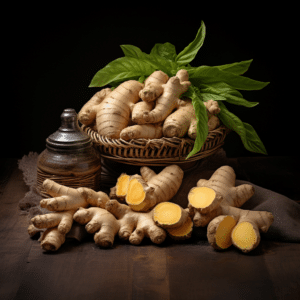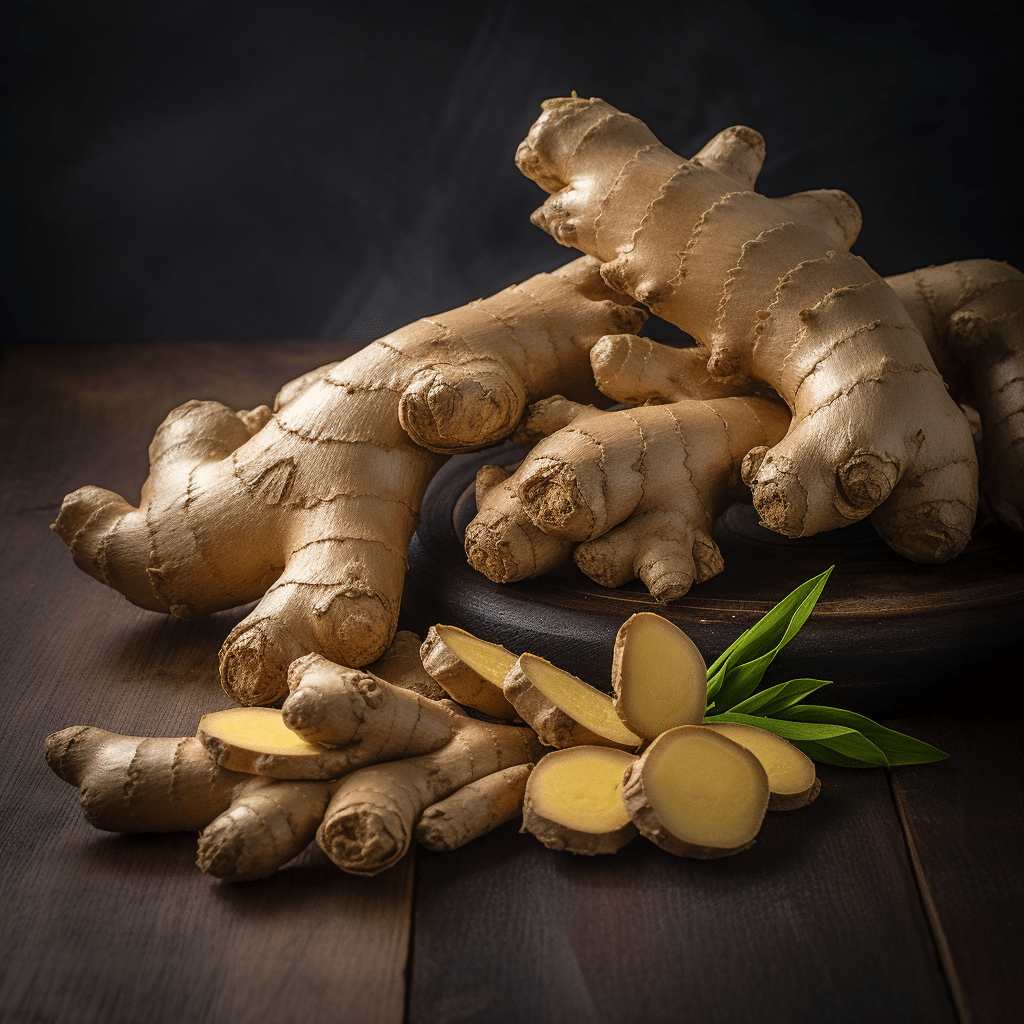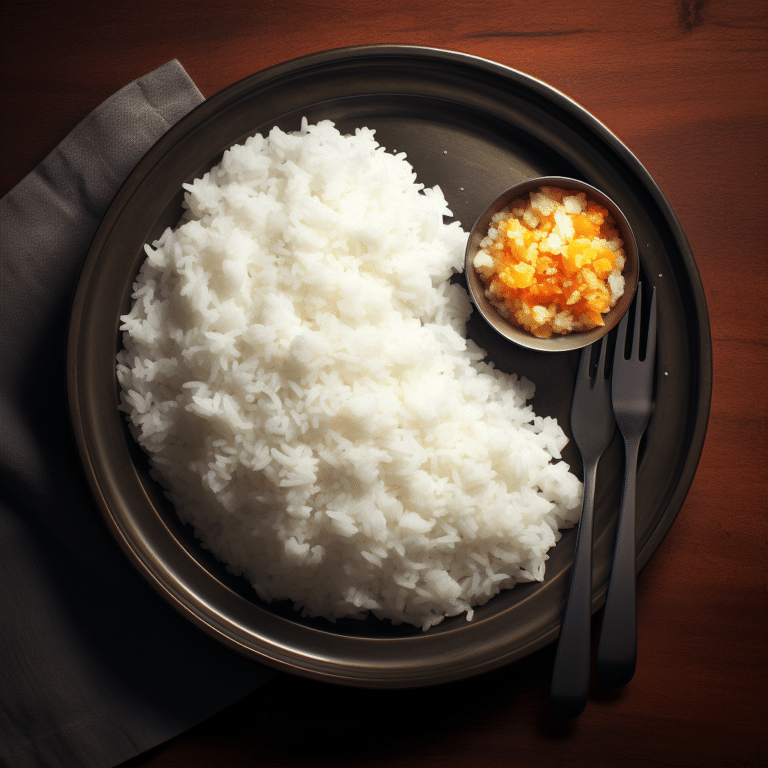Ginger vs. Ginger Root
Ginger Root Overview Among the alliums or garlic family, ginger is of the Zingiberaceae variety. The term ginger root has many interpretations, from botanical to culinary usage. Ginger is harvested from a rhizome. It is both a perennial and an herb.
As a perennial, if the rhizome is cared for, it will produce new growth every spring. So, for example, if you keep it in water for some time, you should notice a significant growth of either a root or a shoot.
As an herb, for a long time ago, ginger has been used as a natural remedy for bowel movements and digestion problems. Its health benefits go beyond this, as modern science has revealed more of its complex uses in our bodies.
Generally, ginger is used as a spice in many dishes across the globe. Due to its versatility and availability, it has become a popular ingredient in many cuisines. This article will help you understand more about Ginger and Ginger roots, keep reading.

Ginger vs. Ginger root Overview
Ginger is a perennial herbaceous plant that grows wild in many parts of Asia, particularly in China and India. It’s also cultivated in other Ginger Root Overview tropical areas like southern Africa and Central America.
It can grow up to 3 feet tall and tends to be more aggressive than most other herbs. Its leaves are usually green with a fragrant, spicy aroma but may also be purple or yellowish green at maturity, depending on the variety grown. Similarly, its flowers are small and white to pinkish or yellowish green in color with orange or yellow stamens attached to them.
Its roots are often the center of interest. They are commonly used in spicing many dishes, for instance, flavoring meats and vegetables, beverages, syrups, and candies, fresh or after drying. Both ginger root and ginger rhizome are referred to interchangeably in this article.
Basically, the Ginger root is about 2 to 4 inches long and about ½ inch thick at its base. Its skin is rough, pinkish-white, and scaly on the outside with pale yellow or white flesh inside it. When cut into, it has a mildly spicy aroma that many people enjoy since it’s not overpowering like other herbs can be when you first eat them.
you can pickle them or add them to sauces or soups for extra flavor!
Ginger roots are usually harvested in the wild before they mature to prevent overgrowth of the plant by reducing rhizome production through topping and cutting back. However, this practice may vary depending on local customs and availability.
Once harvested, the ginger root is processed into fresh or dry forms. For fresh ginger forms, you can easily consume them raw by simply peeling them off to eliminate the significant pungent smell and its strong primal flavor.
However, with dried forms, their concentration is always higher than fresh and is most preferred in many dishes due to their accessibility and easy incorporation. Ginger roots have been used for centuries for their medicinal properties to treat inflammation and stomach pains due to conditions like irritable bowel syndrome (IBS).
Health Benefits of Ginger
The health benefits of ginger are so numerous that you may wonder how you can live without it. Basically, ginger is packed with antioxidants and anti-inflammatory compounds that can help relieve pain and boost your immune system.
Not only that, below are other health benefits of this amazing spice:
Helps fight nausea
Ginger contains compounds called gingerols and shogaols, responsible for their spicy taste and medicinal properties. These compounds give ginger its anti-nausea effect by acting as anti-emetics (they make you feel less sick).
Improves digestion
Gingerol may help treat digestive disorders such as irritable bowel syndrome (IBS) or colitis by stimulating the bowels to contract more effectively and reduce inflammation in the colon. In addition, it may help with bloating due to gas build-up in the bowel.
Helps Prevent Diabetes
Ginger helps prevent diabetes by lowering blood sugar levels and triglycerides in the body. It’s especially effective when combined with other herbs or spices with anti-diabetic properties like cinnamon, cloves, and turmeric.
Ginger also has anti-inflammatory effects, which help reduce inflammation throughout the entire body, including in the brain, where it may play a role in Alzheimer’s disease and other forms of dementia.
Increases Immunity
Ginger also has anti-inflammatory properties that may help boost your immune system’s ability to ward off infection. In fact, some studies have shown that taking ginger supplements may reduce cold symptoms by up to 50 percent!
As mentioned above, ginger contains shogaols that effectively kill bacteria and viruses without damaging the cells.
Prevents Heart Diseases
Ginger is known to prevent heart diseases and strokes by preventing inflammation in the blood vessels, which can lead to heart attacks and strokes.
Helps Treat Motion Sickness
Motion sickness is one of the common reasons people visit the doctor with nausea or vomiting problems. However, it’s also one of the easiest conditions to treat with home remedies like ginger tea or eating ginger roots fresh or dried out (like in cookies).
This natural remedy can be helpful for both children and adults who suffer from motion sickness, although not recommendable for pregnant women due to its mild laxative effect on the body.
Ultimately, the benefits of ginger don’t end with just these; it has other nutrients like vitamin C and potassium. Help boost immunity and muscle recovery after an exercise routine. Ginger may also help prevent cancer cells from reproducing. Which is why it’s recommended for people prone to developing cancerous tumors or immune system problems.

Bottom Line
Ginger Root Overview While fresh and dried ginger perform equally well for most general cooking. Fresh ginger may still be preferable for specific dishes.
However, the effectiveness of ginger depends on two things: how much you take and whether or not it’s fresh. While dried ginger root might be cheaper, you’ll likely need much more to gain the desired effects.
Fresh ginger can be pricey, hence its use in pickling. Regardless of which type you choose; you can expect its 100-year-old benefits to last as long as they have been.






